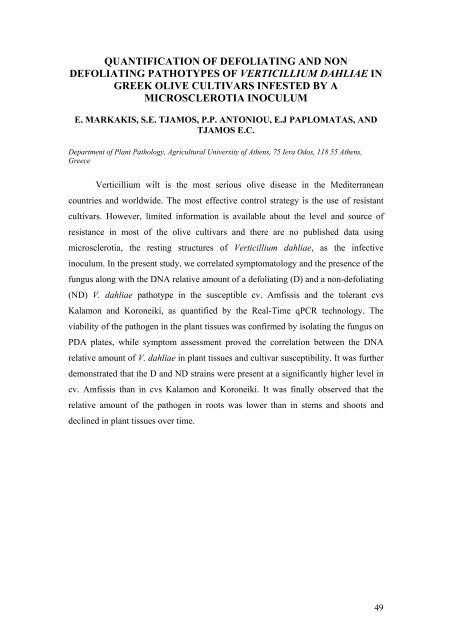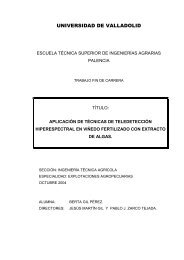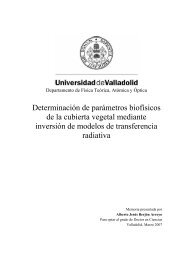10th INTERNATIONAL VERTICILLIUM SYMPOSIUM 16-20 ...
10th INTERNATIONAL VERTICILLIUM SYMPOSIUM 16-20 ...
10th INTERNATIONAL VERTICILLIUM SYMPOSIUM 16-20 ...
Create successful ePaper yourself
Turn your PDF publications into a flip-book with our unique Google optimized e-Paper software.
QUANTIFICATION OF DEFOLIATING AND NONDEFOLIATING PATHOTYPES OF <strong>VERTICILLIUM</strong> DAHLIAE INGREEK OLIVE CULTIVARS INFESTED BY AMICROSCLEROTIA INOCULUME. MARKAKIS, S.E. TJAMOS, P.P. ANTONIOU, E.J PAPLOMATAS, ANDTJAMOS E.C.Department of Plant Pathology, Agricultural University of Athens, 75 Iera Odos, 118 55 Athens,GreeceVerticillium wilt is the most serious olive disease in the Mediterraneancountries and worldwide. The most effective control strategy is the use of resistantcultivars. However, limited information is available about the level and source ofresistance in most of the olive cultivars and there are no published data usingmicrosclerotia, the resting structures of Verticillium dahliae, as the infectiveinoculum. In the present study, we correlated symptomatology and the presence of thefungus along with the DNA relative amount of a defoliating (D) and a non-defoliating(ND) V. dahliae pathotype in the susceptible cv. Amfissis and the tolerant cvsKalamon and Koroneiki, as quantified by the Real-Time qPCR technology. Theviability of the pathogen in the plant tissues was confirmed by isolating the fungus onPDA plates, while symptom assessment proved the correlation between the DNArelative amount of V. dahliae in plant tissues and cultivar susceptibility. It was furtherdemonstrated that the D and ND strains were present at a significantly higher level incv. Amfissis than in cvs Kalamon and Koroneiki. It was finally observed that therelative amount of the pathogen in roots was lower than in stems and shoots anddeclined in plant tissues over time.49




